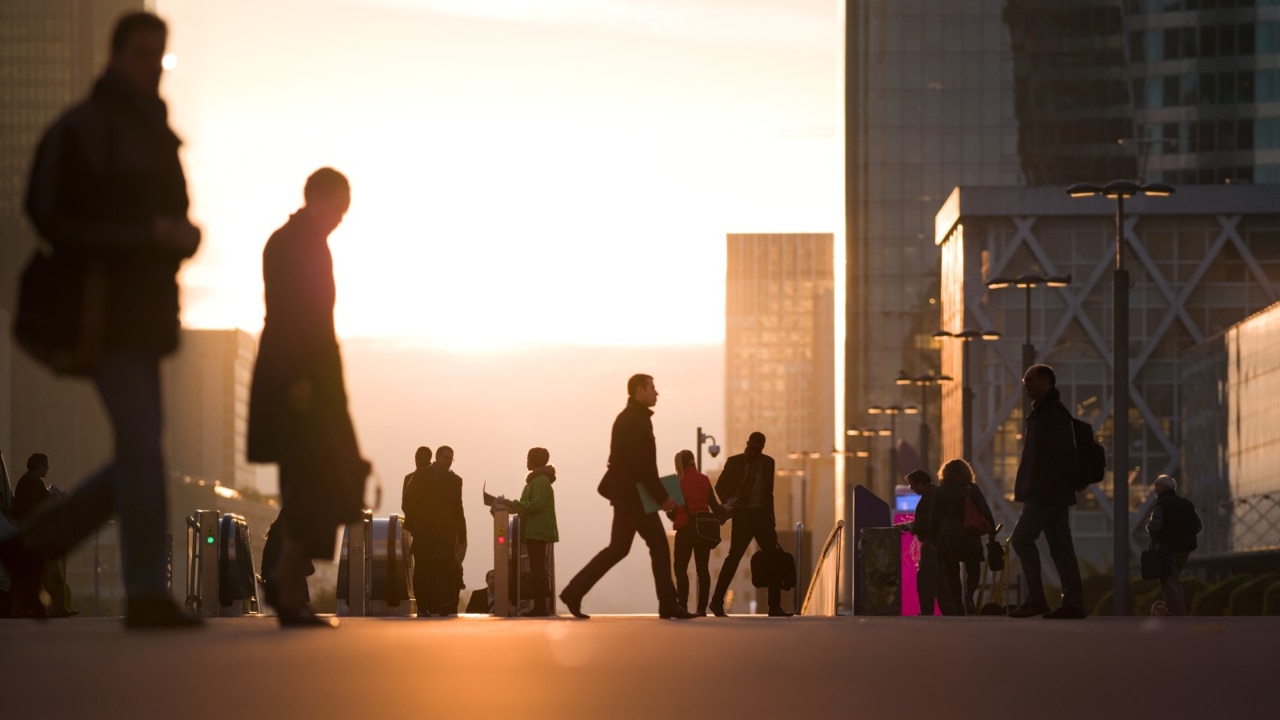Permanent migrants concentrated in Australia’s capitals, says ABS
The largest number of migrants come from two countries, and 90pc of all new arrivals are living in a capital city.

Three million people among Australia’s 26 million population are permanent migrants who arrived since 2000, with the largest contingent coming from India.
And the vast majority of those permanent migrants – 87 per cent – now live in capital cities, 56 per cent of them concentrated in Greater Sydney and Greater Melbourne, new Australian Bureau of Statistics data reveals.
The ABS report, Permanent Migration in Australia, also finds six in 10 permanent migrants, 1.8 million, have gone on to become Australian citizens, with those born in South Africa most likely to have taken that step and those from China the least likely.
And while three in four permanent migrants still spoke a language other than English at home, 90 per cent say they are proficient in English, the report says.
Skilled migrants were the largest category of permanent migrants, accounting for 59 per cent, or 1.76 million people. Just under a million came through the family visa stream, and 283,600 were in Australia on humanitarian visas. Seven in 10 permanent migrants were employed, with skilled migrants at more than 80 per cent employment, the report – based on information from the 2021 census – finds.
“In terms of top occupations, 10 per cent of migrants from the family visa stream and 14 per cent of migrants from the humanitarian visa stream were employed as carers and aides,” ABS head of migrant statistics Jenny Dobak said. “For migrants from the skilled visa stream, the most common occupation was Business, human resources and marketing professionals at 10 per cent.”

The new ABS data comes as The Australian reports that an extra 650,000 total migrants to Australia this financial year and next, including foreign workers and students, will drive a 900,000 increase in total residents.
Treasurer Jim Chalmers says the migration surge – which is higher than anticipated in last October’s federal budget and in January’s annual population statement – had ramifications for the upcoming May budget.
Software engineer Chirag Chaplot, 33, and his banker wife Garima Kumbhat, also 33, moved to Australia in 2018 just months after being married in India. He was an Indian citizen, but was raised in Bahrain. She was born and raised in Mumbai.
“We felt like life was too hard in India, and we were considering resettling in either Canada or Australia,” Mr Chaplot said. “We felt like Australia was blessed with better weather, so we came here and are very glad we did. Australia offers a balanced life.”
Mr Chaplot said he secured a job in Melbourne a week after landing in Sydney and has been in constant employment since. Ms Kumbhat is also enjoying her banking role.
The couple have just bought a new home in Altona in Melbourne’s west.
“This is our second home. Owning a home is a very important part of putting down roots in this country,” he said.

In January, his Australian citizenship was finalised, and she will apply will apply for hers in April. “Of course, this is our end goal to live permanently in Australia. We definitely see ourselves living the rest of our lives here,” he said.
Mr Chaplot and Ms Kumbhat are two of the 439,700 permanent migrants in Australia from India, according to the new ABS data. Those born in India account for 15 per cent of the total intake and one in five skilled migrants.
People born in China accounted for the second-most permanent migrants, and the highest in the family visa stream.
People born in Iraq accounted for 22 per cent of the humanitarian visa category.
While China held the second top spot in terms of permanent migrants, it was as low as 10th on the list in terms of the proportion who had gone on to take up Australian citizenship, at 36 per cent.
South Africa was highest at 74 per cent, ahead of Sri Lanka (71 per cent), The Philippines (68 per cent) and England (66 per cent).
Permanent migrants were also more likely to be highly educated, with just over half (1.4 million) holding a bachelor degree or higher, compared to 29 per cent of the Australian population.
A permanent visa was the entry visa for six in 10 permanent migrants to Australia, with the pathway via a temporary visa the other main avenue.
Ms Dobak said 1.3 million permanent migrants were granted a temporary visa before becoming a permanent migrant – most commonly a temporary student visa.








To join the conversation, please log in. Don't have an account? Register
Join the conversation, you are commenting as Logout